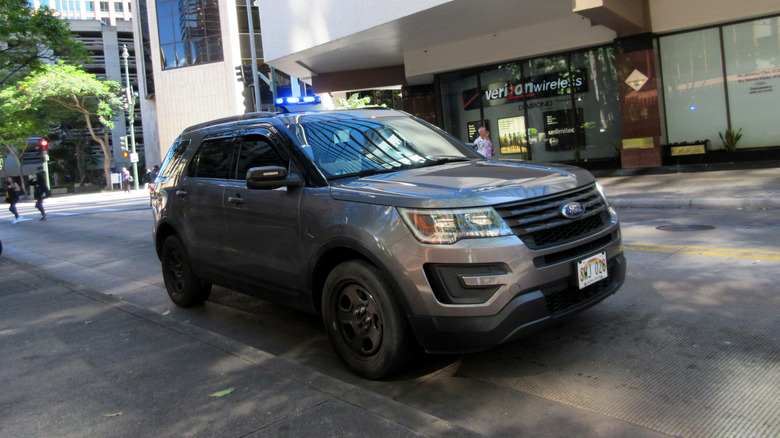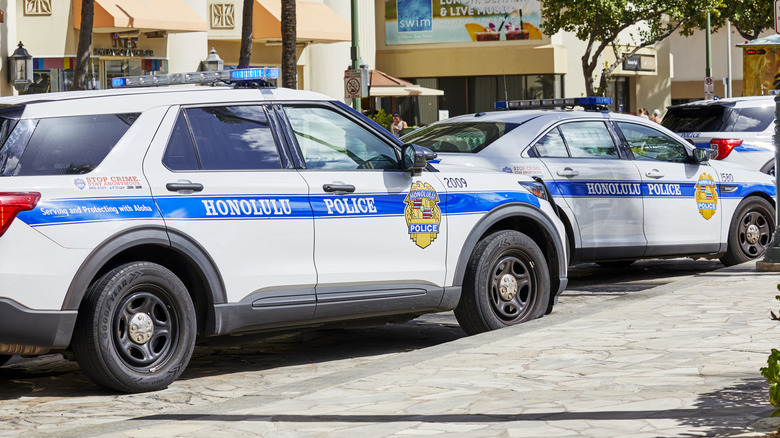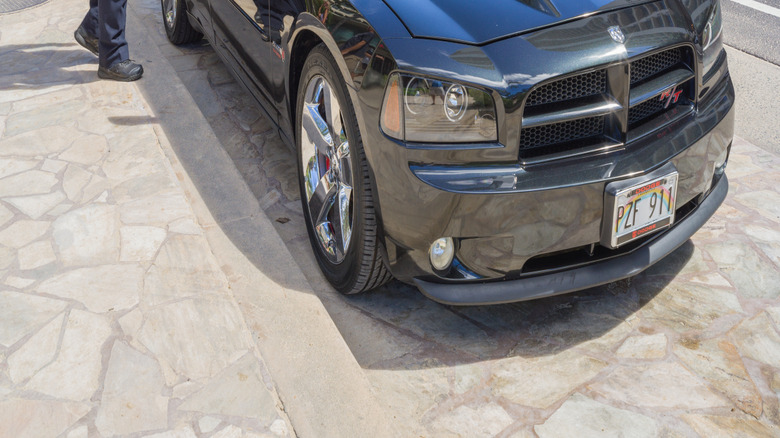Why Do Police In Hawaii Drive Their Own Cars?
The US state of Hawaii is unlike any other, featuring the world's biggest active volcano, a tropical rainforest (the only one of its kind in the US), has zero snakes, and recognizes both ʻŌlelo Hawaiʻi and English as official languages. Because the state is made up of eight islands, government agencies are organized a bit differently than the mainland. For instance, Hawaii has no state police, but instead is split up into four counties, with each one operating its own police force.
There are several reasons Hawaii allows officers to operate their own vehicles. This can include reduced budget costs, supply chain woes, greater variety of law enforcement vehicles (such as pickups), and it's considered a recruitment perk with subsidized vehicles exempt from certain taxes, such as the weight tax. Although, Hawaii is one of the most expensive states to own a car in America.
Some of the ever-present challenges of island living include: products and goods needing to be shipped across the Pacific Ocean (adding to costs), difficult-to-navigate rugged areas, and limited space. These factors have created an environment which requires the need for subsidized private vehicles to pull double-duty as law enforcement patrol units. This became especially clear when supply chains nearly grinded to a halt a few years ago.
Honolulu ordered official cruisers but years later they still hadn't arrived
The shipping industry suffered severe disruptions in the recent past, and it was reported by Hawaii News Now, that the Honolulu Police Department had ordered in excess of 100 patrol cars in 2021, and as of summer 2024, none had been delivered. As you might imagine, this situation caused a significant problem for Honolulu police, leading to some officers unable to start their shifts on time because a vehicle wasn't available. To compound issues, even when patrol cars were onsite, some of them were in the process of undergoing maintenance and being repaired.
Police cars are driven hard, but that's not the only reason you might not want to buy a used one at auction. In a surprisingly not uncommon scenario, man buys old police SUV, but has to call the cops thanks to what he found in the car. Fortunately, as Hawaii does allow private vehicles (which are subsidized) to function as police cruisers, some of these shortages have been mitigated. Although, not just any vehicle is allowed for patrol, as they must meet a strict set of criteria.
What are some of the requirements for using a private vehicle for patrol?
First, there are some rules regarding the appearance of the vehicle, with convertible models prohibited. Not surprisingly, unfinished paint, extensive rust, and non-working parts such as door and trunk hinges will disqualify a vehicle from service, with exceptions. Also, aftermarket add-ons like rims, spoilers, and decals are a no-no. Although, if certain external components like spoilers are part of the stock vehicles design, they could be on the approved list. A few of the coolest police cars in America have featured a spoiler and been used in real police work.
In terms of performance, the engine can't be diesel, as the fuel available to officers is strictly 89 octane level. Engine size is dictated requiring at least four cylinders, and V8s can't be larger than 400 cubic inches, or 6.6-liters. In addition, if a vehicle fails to reach a 0-to 60 mile per hour time within 10 seconds, it's considered too slow for law enforcement work.
Another strict rule with subsidized private patrol vehicles, is the use of blue lights. Only the lights provided by the agency should be utilized, with any additional lighting equipment banned. This has been a long-standing policy among the Honolulu police dating back to the early '80s, where witnesses described a woman being pulled over by a vehicle with blue grill lights before she disappeared, leading to fears of imposters posing as police.


